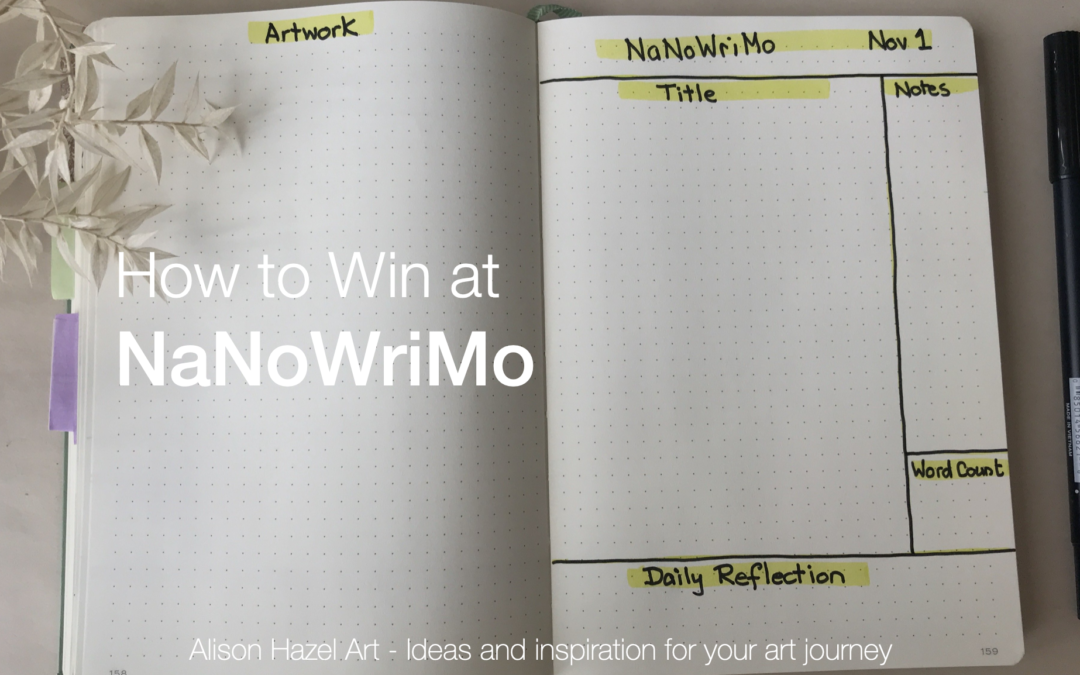NaNoWriMo
NaNoWriMo is National Novel Writing Month.
As the NaNoWriMo movement has become a global effort it could be called IntNoWriMo or International Novel Writing Month, but that probably won’t easily catch on.
NaNoWriMo happens every November.
The goal is to write 50,000 words in the 30 days of the eleventh month.
NaNoWriMo closely follows Inktober which is an art challenge every October which I love as well.
How NaNoWriMo Works
Say you were planning a novel, or any other type of non-fiction book or writing project, to have 50,000 words is a vast number of words completed.
If we take 50,000 words and divide them by 30 days, it returns 1667 words per day, every day for the month of November.
Stephen King
In his fabulous book, “On Writing” Stephen King says he writes 2000 words every day of the year, including Christmas Day, and on his birthday.
When I first read this fact it seemed an awful lot of words, but then I thought to myself, well perhaps I can do 1000 words a day and this has been my goal since then.
For NaNoWriMo you can write 1667 word a day and just push yourself a little further.
When I started writing blogs, I was writing about 150 to 200 words and then putting it in a drawer and coming back three days later as I thought this is how real writers work.
I’d read that proper writers write a bit of work, then they let it percolate and they eventually come back to it, but that really didn’t work for myself and my blogs.
After discovering the word count that Stephen King aimed for each day, I decided that I will write 1000 words a day.
Suddenly one thousand words became the perfect length for a blog post for me.
Most serious blogs are at least 1000 words, and some can be around 2000 words because this is a good amount which can be read in under five minutes.
How to Win at NaNoWriMo
NaNoWriMo is a challenge which you take with yourself.
You can report your wins on social media with everybody else who’s doing it under the hashtag #NaNoWriMo.
But to win at NaNoWriMo you must write 50,000 words during November.
The idea is that your 50,000 words could be a solid foundation for any type of writing project.
What to do With What You Write
What you write for NaNoWriMo will be different for everyone.
Here are some of my ideas on what to do with what you write.
- It can be the basis for a book.
- You could have 1000 words per week for your blog for a whole year and then you would get fifty blog posts of 1000 words each.
- Your writing could become the basis for a course outline that you want to teach which may be a speciality topic that you inside out.
- It could be content creation for any creative project. For example, if you are writing for other people, or ghostwriting, you can get your ideas down in 50,000 words.
- You could have fifty 1000-word (or thirty 1667-word) scripts for YouTube videos if you are a YouTuber.
- You might write fifty 1000-word (or thirty 1667-word) short stories or short story outlines. If you are artistic you may wish to go on and illustrate these as well.
Why Do NaNoWriMo
When you consistently write every day, and you push yourself to 1667 words, it builds the habit of writing.
This ritual will benefit you for the rest of your life because once you see what you can achieve during November you realize you have so much more inside you.
These revelations come to yourself as you see what you can achieve.
You can write 1667 words today and you can put 50,000 words down in November which could be a turning point for you and your creative journey.
My Experience with NaNoWriMo
I have tried NaNoWriMo three times in the past.
First Attempt
The first time was years ago when I thought I was going to write a novel. I quickly discovered that a novel isn’t my thing. They say everyone has a Great American Novel in them, well, I don’t think I do because writing a novel just didn’t keep my interest.
Second Attempt
The second time I attempted NaNoWriMo I was writing a new age book and although I got off to a good start, after about seven days, I just couldn’t keep up with the word count and I let it go.
In the time after my abortive NaNoWriMo attempt I did complete that book, but it took an awful long time (years) to get the basics down.
I often think that if I’d stuck to NaNoWriMo I would have forced myself to have all the basics that I needed for the structure of the book.
Third Attempt
The third time I attempted NaNoWriMo I was all caught up in all the social media aspect of it.
I saw that people were posting and saying, “I did 1500 words” or “I did 1200 words today” or “I’m on track for NaNoWriMo” and, “by day five you should have XYZ in number of words and I’m there.”
Many people were making it, but I found I still couldn’t keep it up every single day.
I slowly slipped behind on the word count and I let it go.
But this year I’m getting organized to write NaNoWriMo.
Planning NaNoWriMo for This Year
I’m writing this in July because I’m already thinking about what I’d like to achieve during NaNoWriMo in November which is still five months away.
I know that being prepared properly is what’s probably going to get me through.
There are several steps I’m planning out and I’m going to list them now.
What I’m Writing – 30 Blogs
I shall write thirty blog posts of 1667 words each, so that would be one blog post per day in November.
My decision is to write thirty blog posts of 1667 words each for following year.
I’m going to do thirty separate blog posts which will certainly set me up for what I need to provide me with lots of content going into the New Year.
After NaNoWriMo, and during this December, I can polish the posts.
My first completed blog post will be published in the first week in January.
Word Document Setup
I will set up the thirty Word documents on my computer beforehand and have them ready to go.
Each Word document will include the date in November and the blog title all set for me to start typing immediately on November the 1st.
New Journal
I also have a new journal, I love journals, which I’m dedicating to NaNoWriMo this year.
In my NaNoWriMo journal I am making notes about the content.
If I do thirty individual topics, I need thirty titles for each of the blog posts.
Then I will know each morning when I wake up what my daily title is and what I’m supposed to be writing about that day.
I don’t want to be sitting at my keyboard thinking, “Gosh what shall I write about? I know, let me make some coffee and do the laundry” and not getting the words on the page.
Although I’m not writing any words before November, I am planning what I’m going to be writing about.
Artwork for Each Blog
Because I am a creative and not just a writer, I do like to do art which is what the website is about.
For my NaNoWriMo journal I require a book with at least thirty full double-page spreads one spread for each day of November on which I can do an art piece related to the blog post.
This means the book must have at least 60 pages if not more.
Daily Reflection
I’m also planning to have a daily review at the end of each day.
I envisage my daily review as a place where I can write one or two sentences about how the writing went.
Because I do believe that some days, I won’t be able to do any writing at all and that being the case, I would either have to catch up over the next few days or get ahead beforehand, so that I can afford to take a day off if I have to.
I don’t want to limit myself to 1667 words per day and, certainly, if I can get ahead in the beginning that will help because I do tend to flag mid-month.
I feel that having a reflection in the evening in my journal jotting down a few sentences will help me realize what I’m trying to do and why I’m trying to win at NaNoWriMo.
My NaNoWriMo Page Template
This diagram shows the layout of my journal pages for my NaNoWriMo writing this year.
I always start on a double spread page.
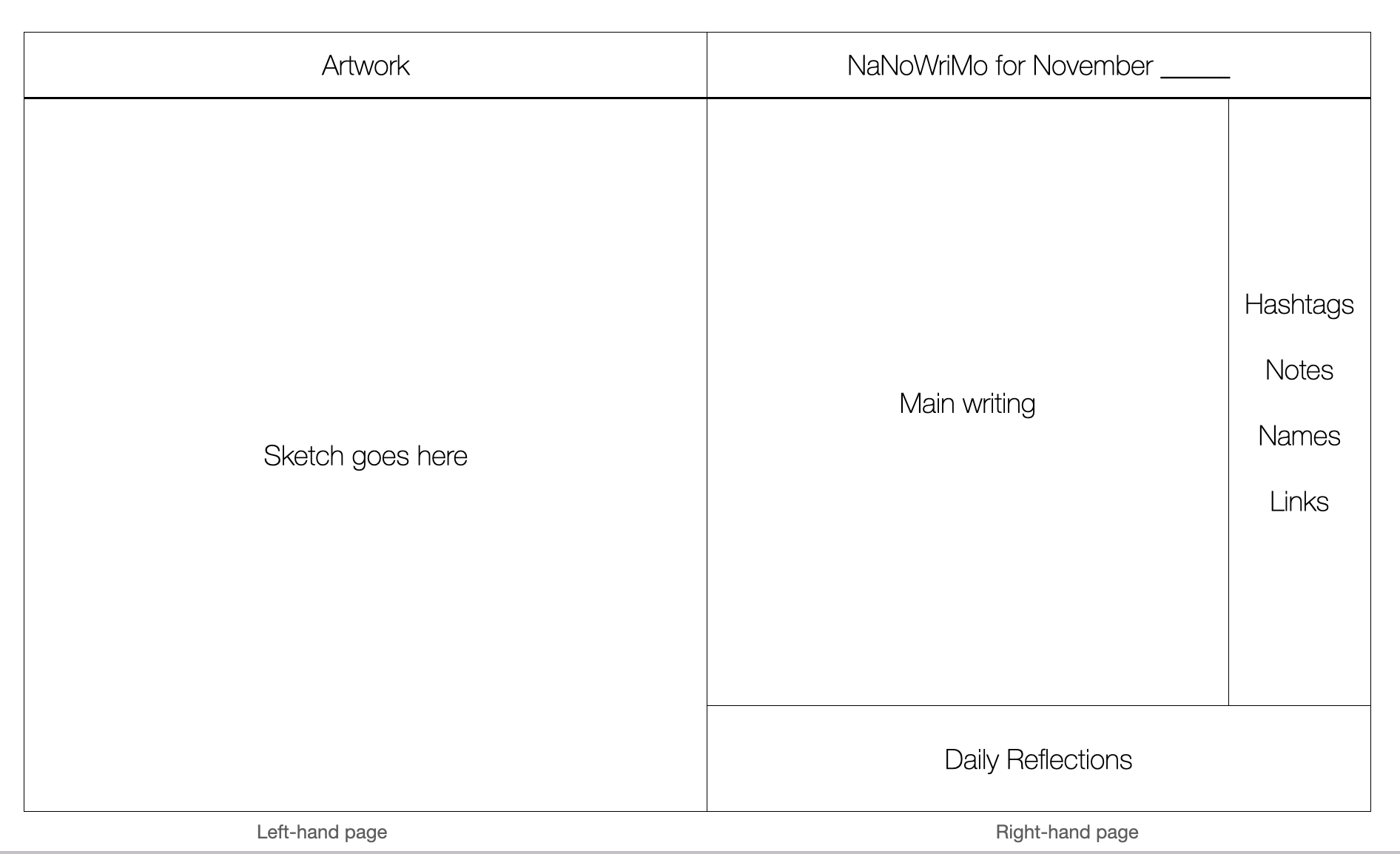
Left-hand Page
On the left-hand page, I will draw the artwork that goes with the post.
Right-hand Page
The first right-hand page will be divided in a particular way.
Top
At the top is the working title, subtitle and then the paragraphs below.
Sidebar
On the right-hand sidebar is an area where I can make notes about items which I need to mention such as:
- People’s names.
- Specific concepts I want to make sure that I’m stating.
- The highlights about the actual blog post.
- Links to websites or to an artist where I reference their work.
- I may need to make sure that everything is tabulated, and accreditation goes to those who I’m talking about. For instance, if I reference a Picasso painting, I will put a link to Picasso on his Wikipedia page or something like that. Or if I reference neurographic art I may put a link to some of my YouTube videos about this topic.
- Tags, links and hashtags will all go in the right-hand sidebar on the first page, so I know immediately what the post is about.
Main Body
The body of the writing will be on the right-hand page in the wide left column.
I will set out my journal ahead of time because I do enjoy handwriting although I may ultimately put it all into Word.
I will write in Word to get the correct word count, and this might sound like double duty, but I do believe that being properly prepared will help me.
Footer
The bottom footer area is for reflection and evening review about how I felt the day went.
I want to reflect on this writing journey.
Notes
If I don’t manage to finish in November, I will still have all my notes in my journal about what I was getting into.
I can continue into December, if necessary, but I hope that it won’t come to that.
What to Write – Ideas
I want to share my plans for NaNoWriMo with you so that you might give some consideration to getting started with some writing project of your own this year.
Memoir
You may want to do a memoir for your family. A family record is something I’ve been toying with as my daughters are saying, “Hey tell us about the old days, were you in the war?”
I mean how old are they think I am?
Recipe Book
Perhaps you want to do a recipe book or perhaps you want to talk about gardening these are topics that interest me.
I may or may not want to at one point write about those things this year.
My focus is writing about developing creativity specifically in women over the age of 60 in the third age.
I am just sharing this with you.
If you feel typing is not your thing or tapping on the keyboard is not your thing or you don’t even know how to use Word, then pick up a pen.
You can still get yourself a journal and start writing and planning out what it is you want to share and what you really want to leave behind.
Legacy
This might be the year when you write your life story for your future generations which can be shared with your children, grandchildren and the rest who come behind you.
You have a lot to offer.
We are moving in a digital world and many of the young folk don’t know anything about it.
You might want to share that.
I’ll talk more about documenting your legacy in another video.
Self-care
I’m not going to beat myself up if I don’t manage to write 50,000 words in November.
I would love to complete this and I’m getting as prepared as I can to do NaNoWriMo and I plan to do it, but I will not mentally harangue myself if I do not complete the challenge.
Additionally, I will not consider myself a failure if I don’t make it.
However, I will certainly consider myself a success if I do win at NaNoWriMo.
Hashtags
Use the hashtag #AHANaNoWriMo so we can see what work you are doing with our template.
I’d love to see what you create.
Love,
Alison
Aspiring Artist Activity
In your art journal (or your special NaNoWriMo journal) please do the following:
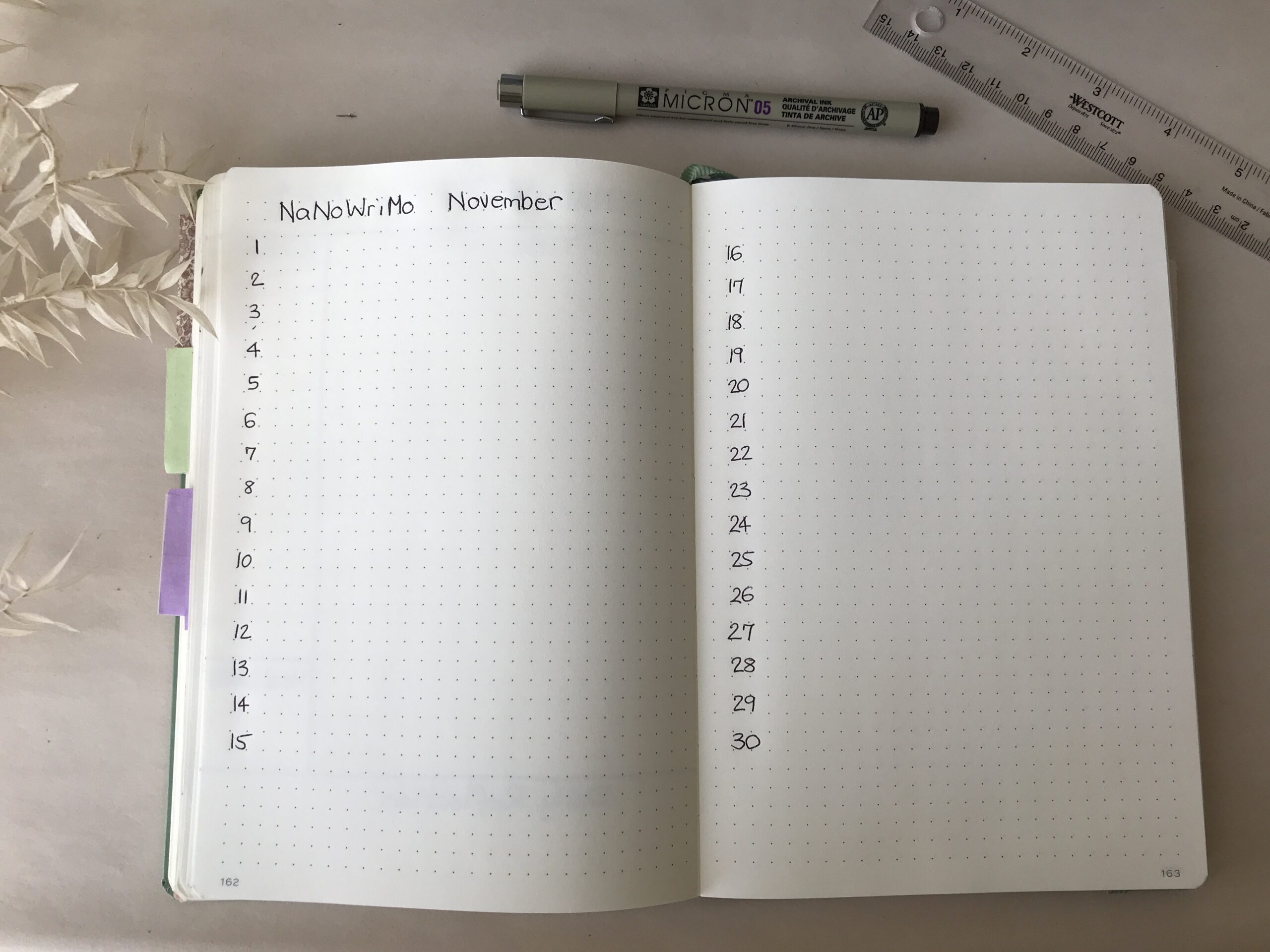
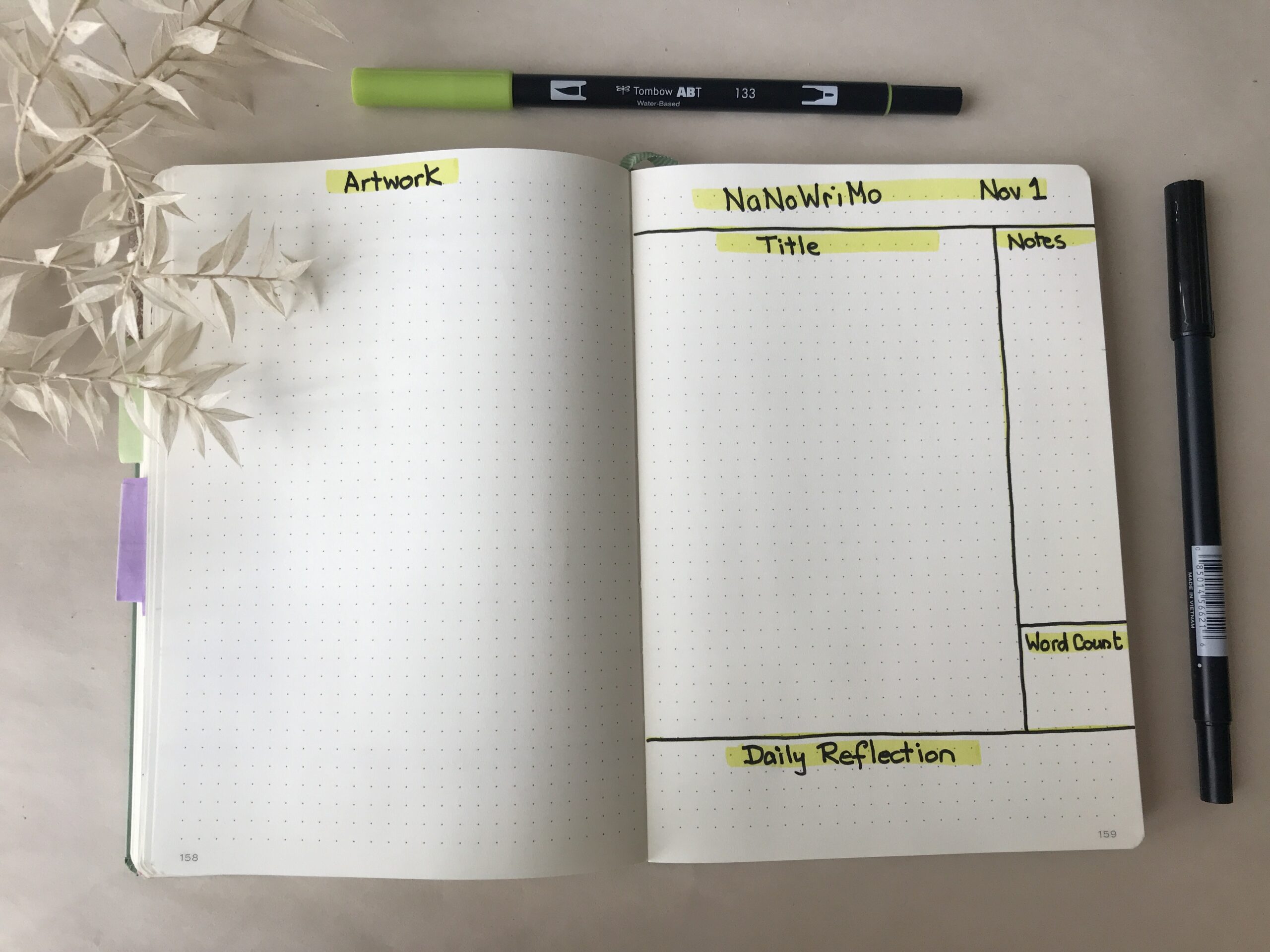
Topics
- Over a two-page spread on the left-hand page, write the dates from November 1st to 15th in the margin. On the right-hand page, write the dates November 16th to 30th.
- Think about what type of writing project you want to complete in NaNoWriMo.
- Between now and November write in the working titles of the writing project you plan. If it is a novel, write titles for each chapter or if it is for blog posts write the titles for each blog.
Templates
- On the next two-page spread draw out the template and write the date as November 1st.
- Leave the next two-page spread empty for the overflow words from November 1st.
- Continue drawing the template on every other two-page spread for each day in November.
Now you are all set up to win at NaNoWriMo this year.
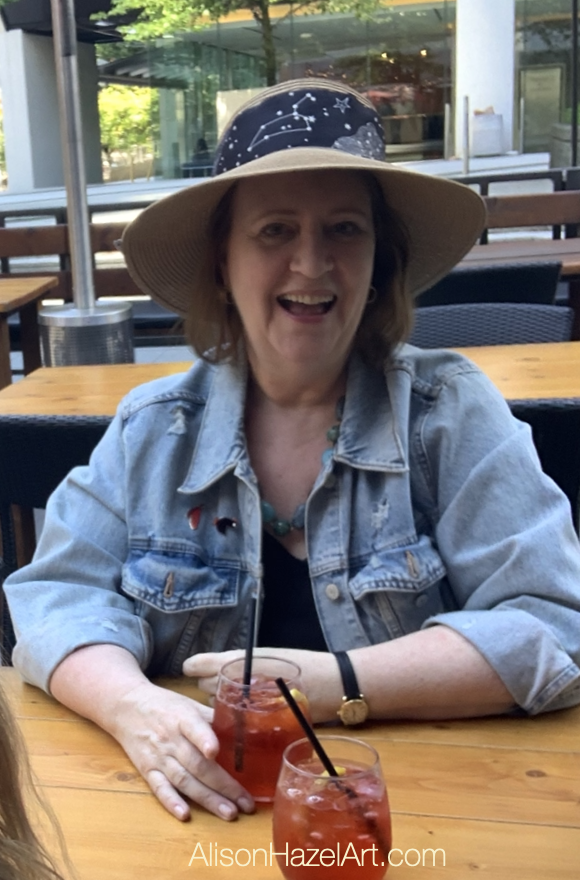
Author Bio
Alison Hazel shares her ongoing journey about becoming an artist later in life. She creates simple art that anyone can make. She hopes to inspire you to reach your creative potential in the area that suits you.
Go here to read more about Alison’s story.
If you want to send Alison a quick message go here.
Blog Posts
Here is a sample of some more topics from our blog posts.
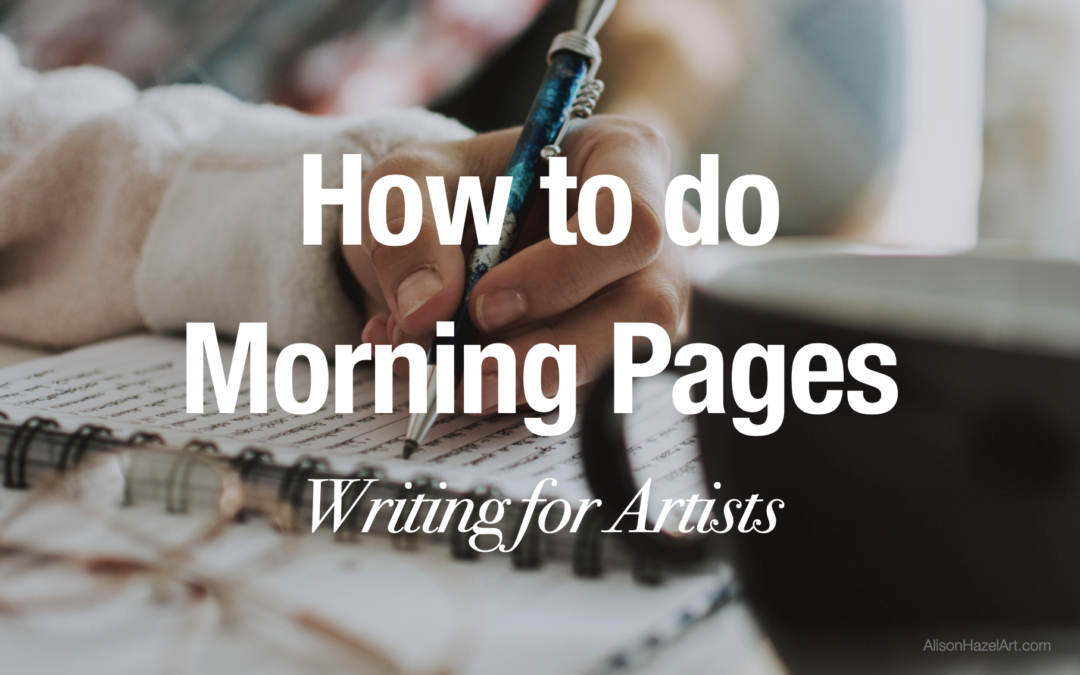
How to Do Morning Pages
See how writing morning pages helps you tap into your inner creative. Learn how I use morning pages to help me produce more art and write blogs.
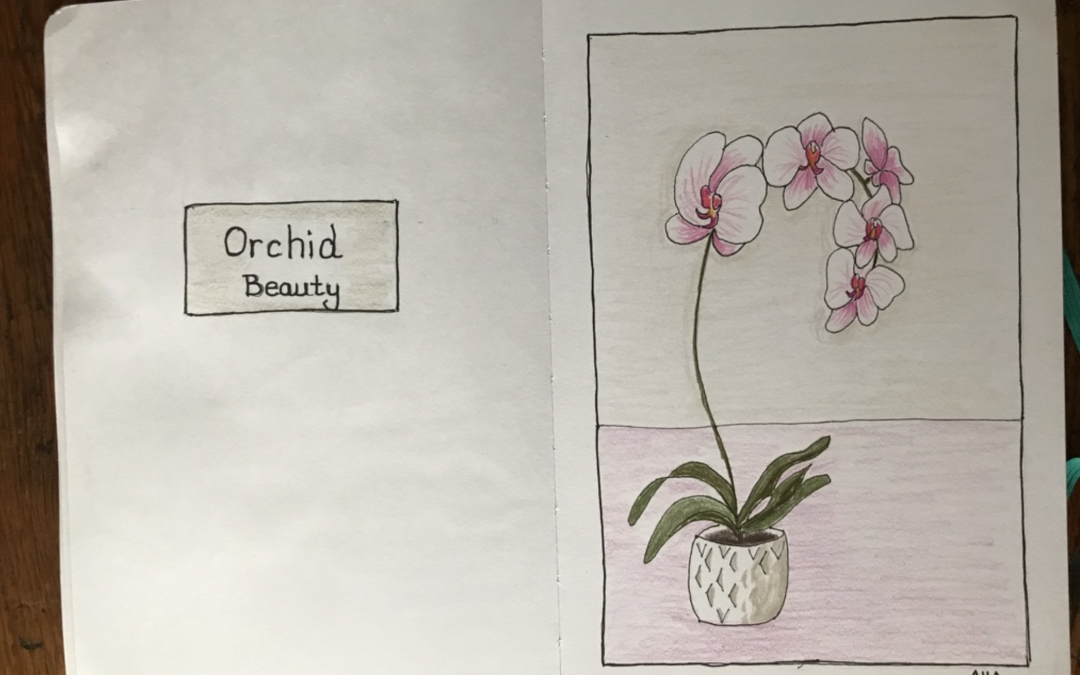
Sketchbook – Orchid with Colored Pencils
See how to draw step-by-step an orchid with colored pencils in your sketchbook. Learn the meaning of the orchid flower.
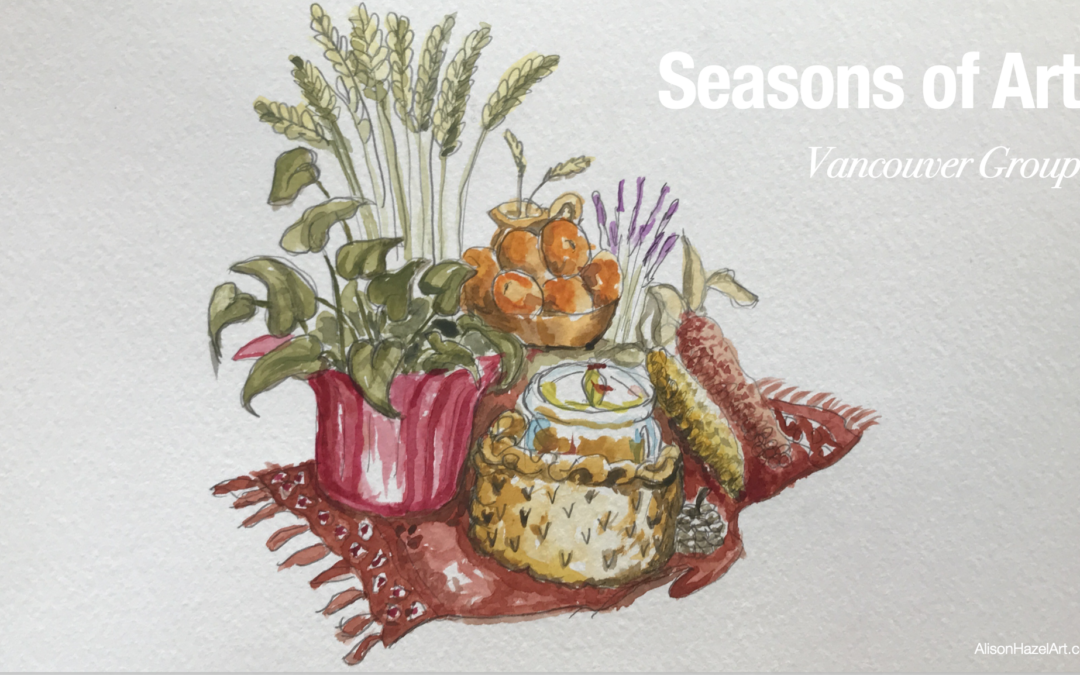
Seasons of Art – Vancouver Group
The “Seasons of Art” is a group that meets once each season with a focus on developing creativity and self-care through simple art and journaling.
